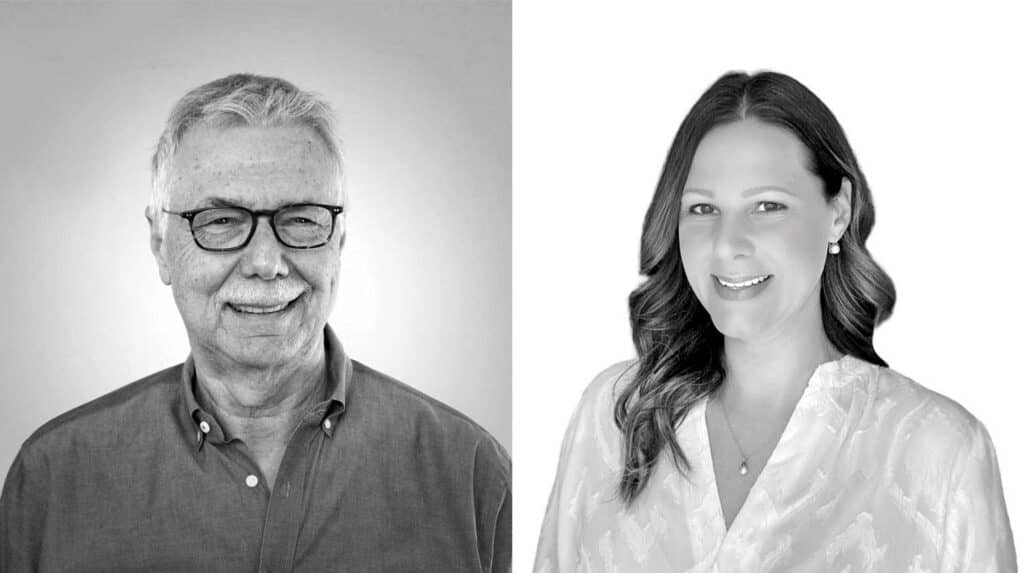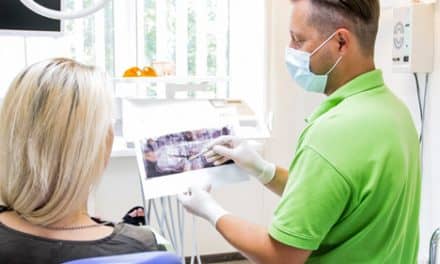Today’s consumer isn’t necessarily seeking a specific clear aligner brand when they ask about aligner treatment. They want the treatment modality and their orthodontist’s expertise. It’s time to learn how to brand that.
By Leon Klempner, DDS, and Amy Epstein, MBA
Orthodontists can benefit in significant ways from the brand awareness generated by providing clear aligner treatment under their own brand rather than promoting the leading manufacturer. Here is how to get that done, while increasing both profitability and growing new patients at the same time.
With a multi-million-dollar marketing machine behind it and more than a two-decade head start in the industry, consumers are already well aware of the leading manufacturer of clear aligners.
In fact, recent estimates show that this company is shipping almost 600,000 cases a quarter. That’s 2.4 million per year.
However, there’s a significant upside to all this brand awareness, even if you don’t use them as your aligner supplier. Through years of advertising and influencer marketing, the demand for aligner treatment in general has grown significantly. We’re sure you get the questions about traditional braces versus clear aligners almost every day from everyone—adults and tweens alike.
The leading brand name is so synonymous with clear aligners it has now lost its uniqueness. When you go to the store to buy Band-Aids are you looking for that specific brand or do you just need an adhesive bandage to cover your cut? That’s just another example of a brand that’s become an everyday word for the product it represents, which is a trademark of Johnson & Johnson.
This begs the question: Does the leading manufacturer need you to do any more marketing for them on your website? And more importantly, do you need them? Consumers don’t necessarily want the leading manufacturer of clear aligners; they want the treatment modality and all the benefits it provides, and with an orthodontist whose knowledge and experience they trust.
We think that a better opportunity presents itself. The technology and the companies exist to allow orthodontists to now brand their own clear aligners, to increase brand awareness of their own practice, to differentiate themselves in their local marketplace, and to be more profitable while doing so.
Step 1: Choose a progressive clear aligner partner
The first step is to engage a clear aligner partner that empowers your practice to accomplish everything you did before with the big brand company and more.
You do have options. If you are pretty tech-savvy, you can invest in an in-house printer and the software you need to print your own aligners right in your office and brand them with your practice name. We have worked with clients who went this route doing the research themselves and investing in the equipment they need, which includes a printer, the materials, and post production devices. Upfront costs and training staff on how to use the new equipment, as well as ongoing labor, must be factored into the equation.
A highly progressive practice with staff already in place who are quick to adapt to technology changes is vital to the success of any office looking to bring clear aligner production in-house. It needs to be built into your office culture.
Alternatively, there are companies that provide aligner manufacturing and full technical support but give the orthodontist complete control over the treatment plan. uLab Systems’ user Sky Naslenas, BSc, DDS, MSc, FRCD(C)—a Toronto-based orthodontist—shares that the company allows her to override AI and algorithms that are set out as a baseline by the leading manufacturer. Additionally, she is able to stage treatment based on the patient’s needs, without committing to a full package, and take advantage of uLab Systems’ per-aligner pricing strategy which allows a doctor to order any number of upper and lower aligners they need without obligation or going through red tape.
Step 2: Make sure it’s legal
Orthodontists would be remiss if they did not ask about the legal pitfalls of branding their own aligners. Do you have to register your brand and submit to a slew of rules? Most practices will not ever have to worry about running afoul of the FDA.
Trey Lawrence, vice president and general counsel at the American Association of Orthodontists, weighed in on this topic recently on the People + Practice podcast, now called The Golden Age of Orthodontics.
He addressed the legality of individual practices branding their clear aligner packaging.
“There doesn’t seem to be any issue with putting your practice name on a label on the box with the aligners,” stated Lawrence.
This is true only if you are using them for your own patients, and where you are the doctor of record. He warned that practices should not brand their aligners “something totally different from your practice name.”
If the orthodontist creates a separate brand for the aligner service from the practice’s own name, this could invoke some FDA requirements, according to Lawrence. To reiterate, brand your clear aligners with your practice name and logo and don’t try to resell them as a service to another office and you should be well within the legal guidelines.
Step 3: Brand your aligner packaging
After picking the right clear aligner partner, the next step is to extend your existing practice branding to your aligner packaging. From a pure marketing perspective, your reputation and the trust you have built in the community trump a commercial brand name any day of the week. It’s the doctor who matters most in this equation. The big box manufacturer of clear aligners is not planning and managing your patient’s treatment, you are. (In the past, did patients come to the orthodontist requesting their favorite manufacturer of wires-and-brackets? Probably not.)
According to Deborah Solomon, DDS, owner of Smile Health Orthodontics with offices in Los Angeles and Beverly Hills, most patients don’t even know the difference, nor do they care. She offers both the leading manufacturer as well as her own branded clear aligners.
“Only a small percentage demand the big-name manufacturer,” she said. “Providing my own branded aligners prioritizes my practice brand over treatment modality.” Like Naslenas, Solomon is a uLab Systems customer and she takes advantage of the fact that the company offers custom aligner packaging through its doctor portal. The doctor simply uploads their logo, and an in-house designer provides assistance to ensure the custom packaging looks professional.
But beyond the custom packaging, outsourcing her aligner manufacturing to uLab Systems allows her to ensure that excellent customer service is part of her brand identity. And that means being able to prioritize flexibility.
Solomon uses the company’s uSmile Aligners and with the per aligner pricing, she is able to offer Phase I aligner treatment on a trial basis when parents aren’t confident about patient compliance. She will transition to braces with no additional fees if aligners aren’t a good solution, which is a rare occurrence. Moreover, she takes advantage of the fact that uLab Systems offers her the ability to order quick replacements, order in sprints, and finish traditional cases in aligners.
“People know that we are a practice that understands parents are busy,” she said. “And our branding on the packaging communicates to people in our community the convenience we offer,” she said.
Solomon maintains that having her practice name on the packaging, instead of the leading manufacturer, helps with patient referrals. It allows her brand to reach beyond the office and her website into people’s daily lives at home, school, and work.
“Any additional messaging helps,” said Solomon.
If you don’t yet have a strong practice brand, a marketing agency like People + Practice can help you define it, provide you with the logos, brand name, color scheme and taglines that evoke your practice’s specific values and make you stand out from the competition.
The additional promotion of your own brand of aligners instead of a supplier’s makes your practice unique in the marketplace. It can also drive growth in several different ways.
Step 4: Increase leads and profitability
When marketing your practice, you must speak to the needs of your potential patients, and this of course includes those looking for comprehensive treatment. However, don’t overlook parents of your younger patients, adults perhaps who never had treatment and are looking for improvements to their smile, or those who have relapsed from their previous treatment.
First some facts. Adults account for 25% of all orthodontic patients, according to the American Association of Orthodontists. And reports show that the industry will grow from $3.76 billion in 2022 to $9.60 billion by 2029, with a big portion of that coming from adult limited treatment patients. We will let you do the final accounting on that but it’s a big market no matter how you slice it.
We suggest practices take a two-pronged marketing approach when communicating clear aligner treatment under your own brand. First, look at the parents who have entrusted their children to your care. Second, market to the adult population in the local community. In your advertising, emphasize treatment flexibility and your expertise as an orthodontist. Let your practice’s reputation and trust drive the marketing not the leading manufacturer of clear aligners.
Orthodontists can use their own clear aligner brand to market to this segment of the population. Is limited treatment going to be profitable even if you scale up the number of cases you perform? Absolutely.
Don’t just take our word for it, let’s let the numbers do the talking here. Look at case profitability through the lens of Value Per Visit (case fee/number of visits) to see how beneficial these cases can be even when compared to comprehensive treatments. Based on aggregated data provided by Gaidge, the average orthodontic Value Per Visit (VPV) for a typical aligner case is between $400 and $450 (depending on the market and practice size). It can be $800 or more for limited treatment.
To make it happen, you must have aligner lab fees that support this pricing structure in addition to the targeted marketing to reach this demographic of patients seeking limited treatment. Obviously, it’s not feasible to offer $2,500 treatment if lab fees are going to be $1,400 or more. An aligner partner offering subscription-free, per aligner pricing, on top of custom branding, will help maximize profitability.
There is an enormous potential in treating patients with clear aligners. In the past, most orthodontists were complacent with piggybacking on the big brand manufacturer because they thought there was no other choice. But, today, orthodontists like you have the power to take back control, not only of your treatment process but the branding of your services, all while increasing profitability. OP

Leon Klempner, DDS, and Amy Epstein, MBA, are co-founders of People + Practice, a New York-based digital marketing firm on a mission to unveil the abundant opportunities for orthodontic practices to thrive by implementing digital marketing strategies, technology, and services that fuel practice growth. They also host The Golden Age of Orthodontics (pplpractice.com/podcast), a podcast dedicated to highlighting the most innovative technologies and approaches in the industry. To schedule a complimentary consultation or to learn more, visit pplpractice.com.











At a point in time when our orthodontic specialty is at risk, branding your name and practice instead of a 3rd party manufacturer is particularly significant.